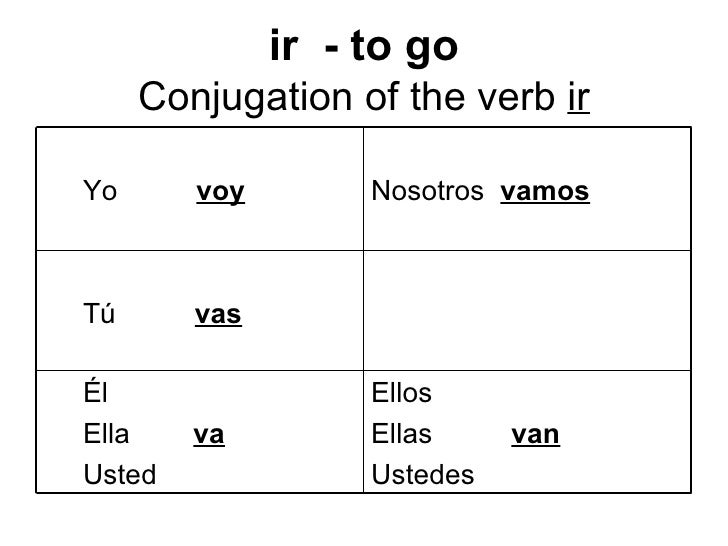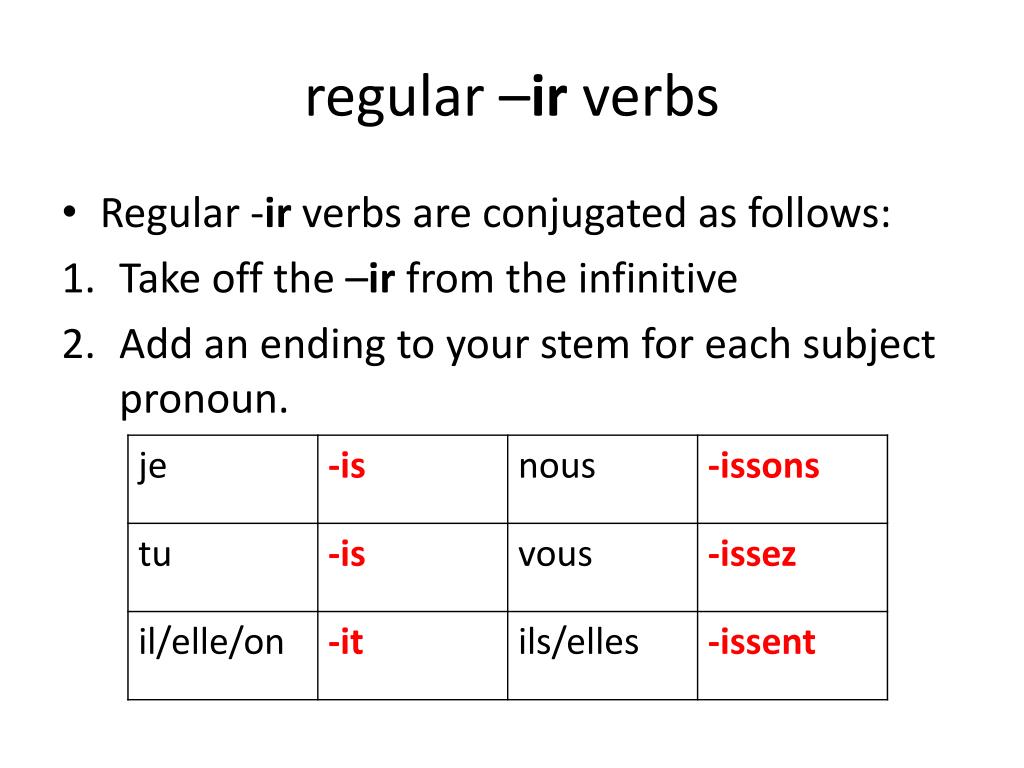

#IR VERB ENDINGS HOW TO#
So now you are an expert and you know how to conjugate -ar, -er and -ir verbs.Septemby Ashley Reid Spanish Grammar 0 comments Ir + a + Infinitive: The Near Future Tense in Spanish To say you don’t do something we are going to put the NO in front of the verb. How to say you Don’t do some of these things Hey do you guys study a lot? Yes, WE study a lot I am asking you guys … therefore you need to answer in the nosotros (we) form. The same thing applies if I ask you a question about Uds. You would answer in the yo form since you are talking about yourself. That’s right you are answering about yourself. Now you have conjugated the verb escribir in all of it’s formsĪnd that’s it. Latin America) speak = ellos escriben / ellas escriben / Uds. He/she/You (f.) speak(s) = él escribe / ella escribe / Ud. See how the ending changed? Let’s continue Depending on who is performing the action. Now we have the stem ( escrib) and we have to add new endings according to rule #2 and depending on who is speaking. Let’s use our scissors again and let’s get rid of that -ir. Good news: -er and -ir verbs ending are very similar but be careful about the nosotros and vosotros forms as they are different. So now we have all of the endings for -er verbs. Comen means they study or you guys study. Come means he studies, she studies or You formal study. If by now you know your subject pronouns then all you have to memorize are the new endings. In one of our previous lessons I told you that it was important to memorize the subject pronouns in this order. Since the new endings are based on who is performing the action, let’s bring back our subject pronouns. So now we are left with the stem of the verb estudiar because we got rid of the -er & -ir er verbs endings Chart

Rule 1 says to get rid of the ending ( -er & -ir). This is where we are going to use our tijeras (our scissors). Remember the verb estudi ar? To study? Well, let’s go ahead and apply the rules together.

In order to do that I am going to use some scissors. So now I want to show you how to apply those rules. Remember conjugating is simply changing the verb to match the person that is performing the action. With that out of the way let’s go over the two rules we have to Conjugate verbs. Again, -er is the ending and whatever is leftover is the stem. Spanish Er & Ir video lessonĬom er = to eat. The rest you will be able to conjugate on your own by following the rules that we learn today. See Chart Belowīelow we will learn to conjugate some of them together.

Add new ending depending on who is performing the action.Follow the rules to Conjugate ir or er verbs: Remove the ir or er and add a new ending.Find the ending: with ir or er verbs it should be ir or er.Make sure its a ir or er verb: ir or er verbs are simply verbs that end in ir or er.In English they are what we call “to verbs”. They are verbs that have not been conjugated. find the Infinitives: Infinitives are verbs that end in -ar, -er & -ir.To conjugate er and ir verbs you remove the ending (-er or -ir) and you add a new ending based on the subject or person performing the action. and there are 5 easy steps to follow


 0 kommentar(er)
0 kommentar(er)
